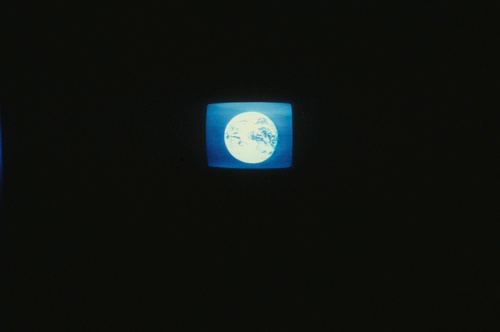Martha Rosler, Art & Social Life; The Case of Video Art SCREENING
The early history of autonomous video art is a pivotal point in the internal culture wars of the art world. Starting in the late 1960s through the early 1970s, artists with quite diverse practices experimented with the new (but not yet widely available) portable video apparatuses. Film had by mid-century superseded both architecture and music as the queen of the arts. But by the 1950s the broadcast television industry and its structures of celebrity were challenging the social status of high art. Television was a problem…and then the Portapak was invented.
Video suggested varieties of freedom to artists restive about or dismissive of traditional studio practices. Video promised a sort of gesamtkunstwerk on the ruins of a high modernism that had demanded a strict separation between forms. Video offered not just the experience of time married to the illusion of space accompanied by sound; because of poor image quality, video also offered relative freedom even from the concerns of cinema, art film, and movies. It provided the opportunity to sketch or to perform, to record a gesture or a narrative, to sing in the shower or dance in the studio, abetted by simple in-camera edits. Artists could, without commitment, break free of the studio if they chose, and, in the political ferment and upheavals of the era, take a look around, report, raise a voice, show a face, register anger, offer an opinion, analyze social structures and events, tell a joke, join with friends, and yell back at the mind-melting products of broadcast television while nevertheless making use of television’s capacity for instantaneous, unrecorded transmission and endless flow, or they could take advantage of a recorded format that was easily reproducible and could be widely disseminated. The international potentials of this form were immediately obvious to artists and even museum administrators, to judge by the range of international “video opens” of the mid-1970s. The wide-open field of early video may arguably be the typical condition of a medium at birth (compare the Internet, on its way from being a utopian arena of activity to a gated compound locked down by corporate toll takers, if they get their way).
Despite the competition of sites like YouTube, video as an art form has become, by definition, an expensive captive of the gallery and museum, the black box inside the white box. But the transformative impulses that drove utopian hopes in the earliest days have not completely evaporated. It is absolutely vital to revisit early video works and their context (including the texts of the era), to provide a deep slice into the moment of origin and see what may be refurbished and adapted for the present-beyond the stylish appropriations of the 1970s “look.” In the face of the Society of the Spectacle, taking back/talking back to the media was a watchword of the era, offering the hope of social transformation through art, activism, and community interventions. This hope animates many today, in whatever form and medium it may be furthered. Video screenings related to this seminar will occur the week prior and the week of the seminar. Information regarding these screenings will be posted shortly. Night School is an artist’s project by Anton Vidokle in the form of a temporary school. A yearlong program of monthly seminars and workshops, Night School draws upon a group of local and international artists, writers, and theorists to conceptualize and conduct the program.
